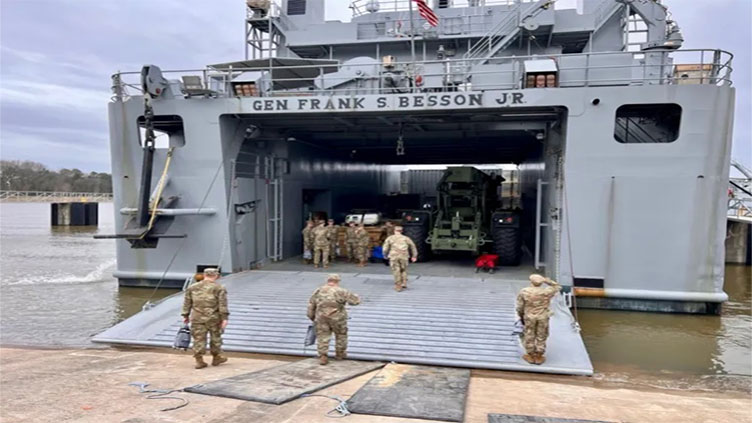Challenges loom over US plan for temporary pier in Gaza

World
Biden announced the initiative last week as war has left Gaza's population struggling to survive.
PARIS (AFP) – While the US plan to build a pier off the Gaza coast to increase aid deliveries is a technique tried and tested throughout military history, it presents logistical hurdles that may limit the international community's ability to bring critical supplies to Palestinians.
US President Joe Biden announced the initiative last week as the war has left Gaza's population struggling to survive, especially in the north where Israeli restrictions have hampered overland access.
The plan to build a "floating pier" would provide some two million meals or bottles of water per day, but Pentagon spokesperson General Pat Ryder said the project could take "up to 60 days" to be fully operational.
In late February, the United Nations warned famine in Gaza was "imminent", with one in six children in the north under the age of two considered "acutely malnourished".
But experts say the maritime route will not be as efficient as supplies brought overland, and many are pushing Israel to allow aid through border crossings.
TROOPS TO REMAIN OFFSHORE
The "temporary offshore" pier will allow military and civilian vessels to drop off their cargo, Ryder explained at a press briefing last week.
Aid will then be transported by Navy support vessels to a 500-metre-long, two-lane wide "floating causeway" before being "transported onto land and distributed into Gaza."
Roughly one thousand US soldiers will assemble the structure, but Ryder reiterated Biden's promise that troops will stay offshore with "no US forces on the ground".
While the pier will address some of Gazans' dire needs, Norwegian Refugee Council chief Jan Egeland had one message for donors.
"Push Israel to open borders," he wrote on X.
"The airdrops, the construction of a port, are a sign of powerlessness and weakness on the part of the international community," Agnes Callamard, Amnesty's secretary general, said in Madrid.
ALTERNATIVE TO AIRDROPS
The attack by Palestinian militant group Hamas against Israel on October 7 resulted in the deaths of about 1,160 people in Israel, mostly civilians, according to an AFP tally of official Israeli figures.
Israel's retaliatory military campaign against Hamas has killed at least 31,272 people, mostly women and children, according to the health ministry in the Hamas-run territory which is now battling a humanitarian crisis.
Aid groups say only a fraction of the supplies required to meet basic humanitarian needs have been allowed into the Palestinian territory since October.
An average of 112 trucks per day -- down from 500 before the war -- have been able to enter Gaza since the first checkpoint, in Rafah on the border with Egypt, opened on October 21, according to UNRWA, the UN agency for Palestinian refugees.
The United States is among the countries that have responded by carrying out airdrops, but while they are "precise and speedy," airdrops are also "limited" and "relatively expensive", wrote retired US general Mark Hertling on X.
For maritime historian Salvatore Mercogliano, the port would be an upgrade from airdrops.
"It is not fast, it is not going to deliver huge amounts of cargo in, but over nothing coming in or air drops... it is a big improvement," he said.
But it would be "much easier" if Israel and Egypt allowed overland shipments, he added.
SECURITY CONCERNS
Building a pier is "the most complicated solution," agreed retired colonel and French military historian Michel Goya.
Security remains a major challenge in bringing aid into the Palestinian territory.
Dozens of Palestinians were killed in early March in a chaotic rush for aid from a truck convoy. The Gaza health ministry said Israeli forces shot at them, but the Israeli army insists most died in a stampede.
Experts also worry that a fixed structure is vulnerable to attack.
"Drones... will be a major concern. They will require constant surveillance... but I am not sure how or who will accomplish this," said Mercogliano.
The last time the US implemented a floating pier was in Haiti, after an earthquake killed over 200,000 people in January 2010.
The temporary structure replaced the extensively damaged infrastructure in Haiti's capital, Port-au-Prince, according to the US Transportation Department's website.
The first iteration, however, dates back to the D-Day landings in 1944 and the famous "Mulberries" which allowed critical supplies to enter France following the successful invasion.
They were invading a beach without a port, Mercogliano told AFP, adding the Allies learned their lesson after the disastrous 1942 raid on Dieppe saw troops slaughtered while stranded without support or provisions.



